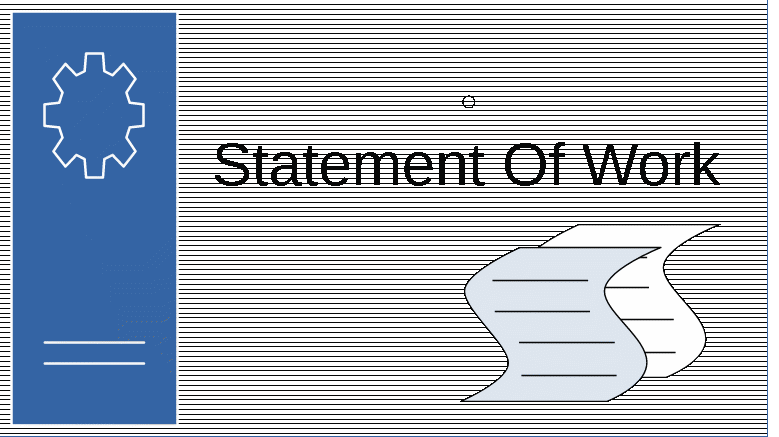Engage your team at work – A software managers perspective
Engaging employee or engaging your team at work is crucial for software managers to foster a productive and motivated environment. Team engagement is a critical aspect of fostering a positive and productive work environment. Engaged teams are more motivated, committed, and driven to achieve their goals.
Top ten effective strategies from a software manager’s perspective to engage your team and enhance their overall performance:
1. Clear Communication: Effective communication is key to engaging your team. Clearly define goals, expectations, and project details. Encourage open and transparent communication channels, ensuring everyone is well-informed and can contribute their ideas and concerns.
2. Empowerment and Autonomy: Provide your team with the freedom and autonomy to make decisions and take ownership of their work. Empowered employees are more engaged and motivated, leading to increased productivity and innovative solutions.
3. Recognition and Appreciation: Acknowledge and appreciate your team members’ efforts and achievements. Celebrate successes, both big and small, publicly recognize their contributions, and provide regular feedback and constructive criticism to help them grow.
4. Professional Development: Encourage continuous learning and professional development among your team members. Offer training opportunities, mentorship programs, and support their pursuit of certifications or advanced degrees. Investing in their growth shows your commitment to their career progression.
5. Collaborative Environment: Foster a collaborative work environment where teamwork and knowledge sharing are encouraged. Provide platforms for collaboration, such as regular team meetings, brainstorming sessions, and cross-functional projects, to promote synergy and creativity.
6. Work-Life Balance: Recognize the importance of work-life balance and encourage your team members to maintain it. Promote flexible work arrangements, provide support for personal commitments, and discourage excessive overtime. A healthy work-life balance enhances employee satisfaction and engagement.
7. Challenging Projects: Assign challenging and meaningful projects that align with your team members’ skills and interests. This not only keeps them engaged but also encourages personal and professional growth. Ensure that the projects are balanced, avoiding overwhelming workloads.
8. Transparency and Trust: Cultivate an environment of trust and transparency. Share information about the company’s vision, strategic goals, and progress. Involve your team in decision-making processes whenever possible, empowering them to contribute and trust their judgment.
9. Team-Building Activities: Organize team-building activities, both within and outside the workplace, to foster camaraderie and collaboration. These activities could include team lunches, off-site retreats, or team-building exercises that promote trust, communication, and a positive team dynamic.
10. Celebrate Diversity and Inclusion: Embrace diversity and inclusion within your team. Ensure that everyone feels valued, respected, and included. Encourage diverse perspectives and create a safe space for open discussions. By celebrating diversity, you foster an inclusive and engaged work environment.
By implementing these strategies, software managers can create an engaging work environment where team members feel valued, motivated, and inspired to perform their best. Engaged employees are more likely to contribute their creativity and expertise, leading to improved productivity, employee retention, and overall team success.
Key pointers to consider when it comes to team engagement
- Shared Vision and Goals: Team engagement starts with a clear and compelling vision that aligns with the organization’s objectives. When team members understand the purpose and goals of their work, they feel a sense of meaning and direction. Ensure that the team’s goals are well-communicated, and everyone understands how their individual contributions contribute to the bigger picture.
- Effective Leadership: Strong leadership plays a crucial role in team engagement. Leaders should inspire and empower their team members, providing guidance and support while also fostering an environment of trust and respect. Effective leaders encourage open communication, actively listen to their team members, and provide regular feedback and recognition.
- Open and Transparent Communication: Communication is the lifeblood of team engagement. Encourage open and transparent communication channels within the team, where everyone feels comfortable expressing their ideas, concerns, and feedback. Regular team meetings, one-on-one discussions, and collaboration tools can facilitate effective communication and keep everyone informed.

- Collaboration and Teamwork: Engaged teams thrive on collaboration and teamwork. Encourage collaboration by assigning cross-functional projects, promoting knowledge sharing, and fostering a culture of helping and supporting one another. Collaboration not only enhances creativity and problem-solving but also strengthens the bond among team members.
- Recognition and Appreciation: Recognizing and appreciating the efforts and achievements of team members is essential for their engagement. Regularly acknowledge and celebrate individual and team successes. A simple “thank you” or public recognition goes a long way in making team members feel valued and motivated to continue delivering their best work.
- Continuous Learning and Development: Supporting the professional growth and development of team members is crucial for engagement. Offer opportunities for training, skill enhancement, and career advancement. Encourage employees to pursue their interests and provide mentorship and coaching to help them reach their full potential.
- Celebrate Diversity and Inclusion: Embrace diversity and inclusion within the team. Foster an inclusive environment where different perspectives are welcomed and valued. Encourage team members to share their unique ideas and experiences. A diverse and inclusive team leads to greater innovation, creativity, and engagement.
- Work-Life Balance: Promoting work-life balance is vital for team engagement. Encourage team members to maintain a healthy balance between work and personal life. Offer flexibility when possible, such as remote work options or flexible schedules, and discourage a culture of overwork. A well-rested and balanced team is more engaged and productive.
Team engagement is built on a foundation of clear communication, effective leadership, collaboration, recognition, and a supportive work environment. By prioritizing team engagement, organizations can create a motivated and high-performing team that is committed to achieving shared goals and driving success.
Right Mind Right Work
I call it ‘Right Mind Right Work’ because it is important to maintain a positive work-life balance. Work-life balance is of utmost importance in today’s fast-paced and demanding work environment. It refers to achieving a healthy equilibrium between work responsibilities and personal life commitments.
Well-being and Mental Health:
Striking a balance between work and personal life is essential for maintaining good mental health and overall well-being. When individuals are constantly overwhelmed by work and neglect their personal lives, it can lead to stress, burnout, and a decline in physical and mental health. A healthy work-life balance allows individuals to recharge, relax, and engage in activities that promote their well-being.
Increased Productivity and Focus:
Paradoxically, excessive work hours and a lack of balance can lead to decreased productivity and efficiency. When individuals are constantly overworked and stressed, their ability to focus, make sound decisions, and solve problems diminishes. On the other hand, when individuals have time for rest, hobbies, and personal relationships, they return to work with renewed energy, concentration, and creativity.
Enhanced Job Satisfaction and Engagement:
Employees who experience a healthy work-life balance are generally more satisfied with their jobs. They have a sense of control over their lives, feel less overwhelmed, and have the ability to enjoy their personal pursuits. This satisfaction translates into higher levels of engagement, commitment, and loyalty towards their work and the organization.
Improved Relationships and Social Connections:
Balancing work and personal life allows individuals to invest time and energy into nurturing their relationships and building social connections. Strong personal relationships contribute to a support system that can help individuals navigate challenges, reduce stress, and maintain a positive outlook. Positive social connections also enhance overall happiness and life satisfaction.
Role Modeling and Employee Retention:
Encouraging work-life balance sends a positive message to employees about the organization’s values and commitment to employee well-being. When employees see their leaders and colleagues prioritizing work-life balance, they are more likely to emulate these behaviors. Moreover, organizations that promote work-life balance are often seen as attractive employers, leading to higher employee retention rates and attracting top talent.
Creativity and Innovation:

Taking time away from work allows individuals to gain new perspectives, explore different interests, and engage in activities that foster creativity and innovation. Stepping back from work-related tasks can lead to fresh ideas, inspiration, and a broader mindset. Incorporating work-life balance practices into the workplace can contribute to a culture of creativity and continuous improvement.
Long-Term Sustainable Performance:
Prioritizing work-life balance is crucial for long-term sustainable performance. When employees are constantly overworked and experience burnout, their performance and productivity suffer, leading to increased absenteeism, presenteeism, and turnover. On the other hand, a healthy work-life balance promotes sustained engagement, productivity, and commitment to the organization.
No one can deny that work-life balance is vital for the well-being and success of individuals and organizations alike. By recognizing the importance of work-life balance and actively promoting it, organizations can create a positive work environment that fosters employee satisfaction, engagement, productivity, and overall happiness.
Significance of transparency and trust within team
Transparency and trust are fundamental elements for building strong and high-performing teams.
Transparency and trust are crucial elements for building strong and effective teams. When team members are transparent with one another, it fosters an environment of open communication and honesty. This transparency allows for the free flow of information, ideas, and feedback, leading to better collaboration, problem-solving, and decision-making. It ensures that everyone on the team is working with the same information, promoting clarity and alignment. Transparency builds a foundation of trust among team members, which is vital for a positive and productive team dynamic.
Trust within a team creates a sense of psychological safety, where team members feel comfortable expressing their opinions, taking risks, and being vulnerable. It enables individuals to trust in each other’s abilities, reliability, and integrity. With trust, team members can rely on one another to fulfill their commitments, leading to increased accountability and responsibility. Trust also facilitates the resolution of conflicts in a constructive manner, as team members feel safe expressing their concerns and disagreements. It fosters stronger relationships, encourages collaboration, and promotes a positive team culture.
Transparency and trust have a significant impact on the overall performance of a team. When there is transparency, team members are aware of the organization’s goals, strategies, and priorities. This alignment enables them to work towards common objectives and make informed decisions. Trust in leadership is also vital, as transparent leaders inspire trust and loyalty among team members. Transparency and trust contribute to a culture of innovation and learning, where knowledge is shared, mistakes are learned from, and continuous improvement is encouraged. Ultimately, transparency and trust create an environment that promotes engagement, productivity, and long-term success.
We can safely conclude to say that transparency and trust are essential components for fostering a positive and high-performing team. Transparency enables open communication and alignment, while trust creates psychological safety, accountability, and stronger relationships. Together, transparency and trust contribute to improved teamwork, conflict resolution, innovation, and overall team performance.
Curated Reads





